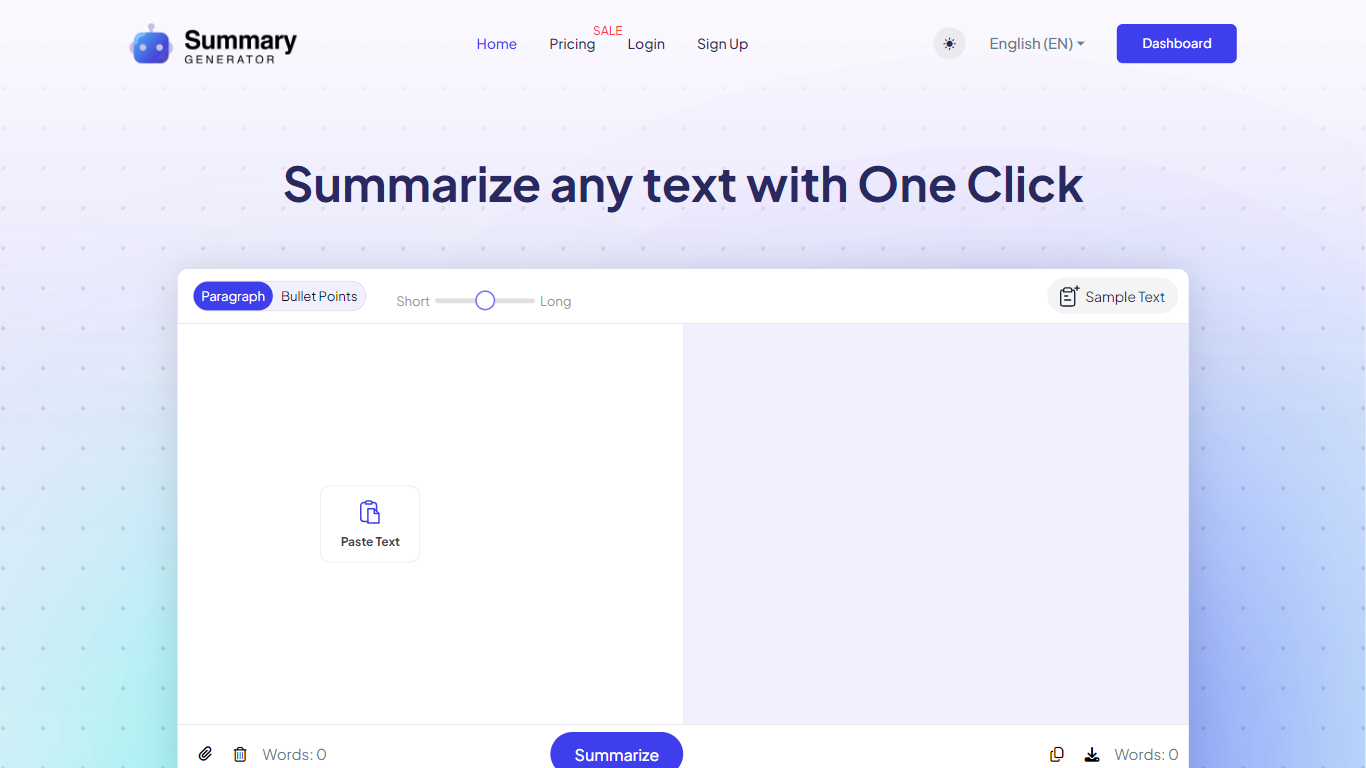AI Summary Generator vs Typeset
Compare AI Summary Generator vs Typeset and see which AI Summarizer tool is better when we compare features, reviews, pricing, alternatives, upvotes, etc.
Which one is better? AI Summary Generator or Typeset?
When we compare AI Summary Generator with Typeset, which are both AI-powered summarizer tools, Typeset is the clear winner in terms of upvotes. Typeset has attracted 24 upvotes from aitools.fyi users, and AI Summary Generator has attracted 8 upvotes.
Feeling rebellious? Cast your vote and shake things up!
AI Summary Generator

What is AI Summary Generator?
The Ai Summary Generator website offers users a powerful and easy-to-use online tool for summarizing text quickly with a single click. This free text summarizer utilizes cutting-edge algorithms to swiftly identify the key points of any given text and generate concise and pertinent summaries.
Whether you're dealing with articles, academic papers, business reports, or various forms of content, the Ai Summary Generator ensures you get the essence of the material without having to go through the entire document.
Tailored to accommodate different user preferences, the tool offers multiple language options and summary modes, such as paragraph and bullet points. Additionally, users can easily paste text to summarize, use the provided sample text to see the tool in action, or adjust the summary length according to their needs.
Typeset

What is Typeset?
Your platform to explore and explain papers. Search for 270M+ papers, understand them in simple language, and find connected papers, authors, topics.
AI Summary Generator Upvotes
Typeset Upvotes
AI Summary Generator Top Features
Multiple Languages: Support for various languages, including English (EN), Spanish (ES), Portuguese (PT), Deutsch (DE), French (FR), and Dutch (NL).
Summary Modes: Choose between summarizing in a paragraph form or using bullet points for quick, digestible information.
One-Click Functionality: Summarize texts instantly with a single click, making it highly user-friendly and efficient.
Word Count: Keep track of the number of words in your summaries to tailor content for specific needs.
Accessibility: Accessible editing tools with responsive design for both desktop and mobile use.
Typeset Top Features
No top features listedAI Summary Generator Category
- Summarizer
Typeset Category
- Summarizer
AI Summary Generator Pricing Type
- Freemium
Typeset Pricing Type
- Free
